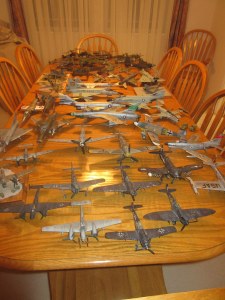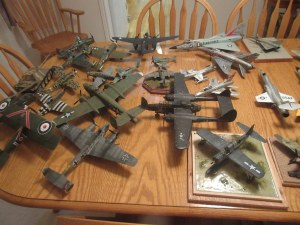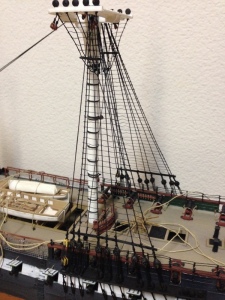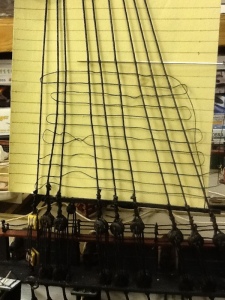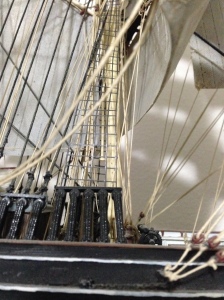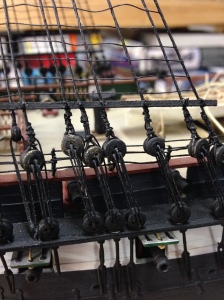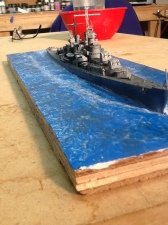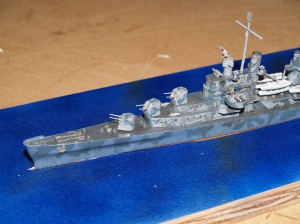Greetings!
Been working slowly on this as well as being busy for the holidays. No matter how much I fantasize about spending my holiday break in the garage doing hobbies something or someone always seems to need my time. But it’s been a nice break and I’m pushing to get this thing done by the end of the year so I can claim it as a 2013 kit.

In the last post I spoke about paining with acrylics. The acrylics have been nice as I usually weather with oil washes and for this I didn’t need to coat it in Future Floor Wax before washing.
The method I used for weathering/washing the kit are explained in a book that I found invaluable to help me through my first 1/700 kit; Ship Models from Kits by David Griffith. Here is a link to Amazon
http://www.amazon.com/Ship-Models-Kits-Advanced-Techniques/dp/1848320914
To weather I first applied a very diluted black filter wash. This is to break up the mono-tone of the camo. Then a white diluted wash in certain spots on the topside as this will break up more of the color and help the colors be more sun bleached. Then a blue oil wash to the sides of the hull. Reason given in the book was that the ships reflect the sea water around them. Along with this I did a pin wash of black around some of the features then a pin was of burnt umber in places where I wanted to show some rust.
Next I glued a piece of water color paper to a piece of plywood and painted it blue. Before the glue dried I cut out the shape of the ship in the middle and epoxied the ship to the base.
Next, using the techniques described in the book I used acrylic paste to set up the bow waves of the ship and put some rough water shapes down. After that dried, I used some more paste to create the rest of the water outside the ships movement.
Once dried I painted it all blue (I think the blue is too bright, I will use a darker blue next time. I then took the blue and added some black and highlighted the low areas of water, followed by the blue mixed with green and generally laid some patters in the water to break up the solid blue color.
This is then followed by arcylic gel. Lay down a layer and whip it up into rough water/waves using a wet paint brush. The gel took 24 hours and dried clear.
Finally I applied the white in small batches to form the bubbles and wake of the ship, as well as dry brushing sections of the water to highlight waves.
Once all dry, I shot the model with dull coat and the ocean with semi-gloss coat and the model is ready for rigging and photo-etched rails, which I will cover next.
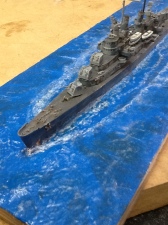

Happy Modeling.
Dave

